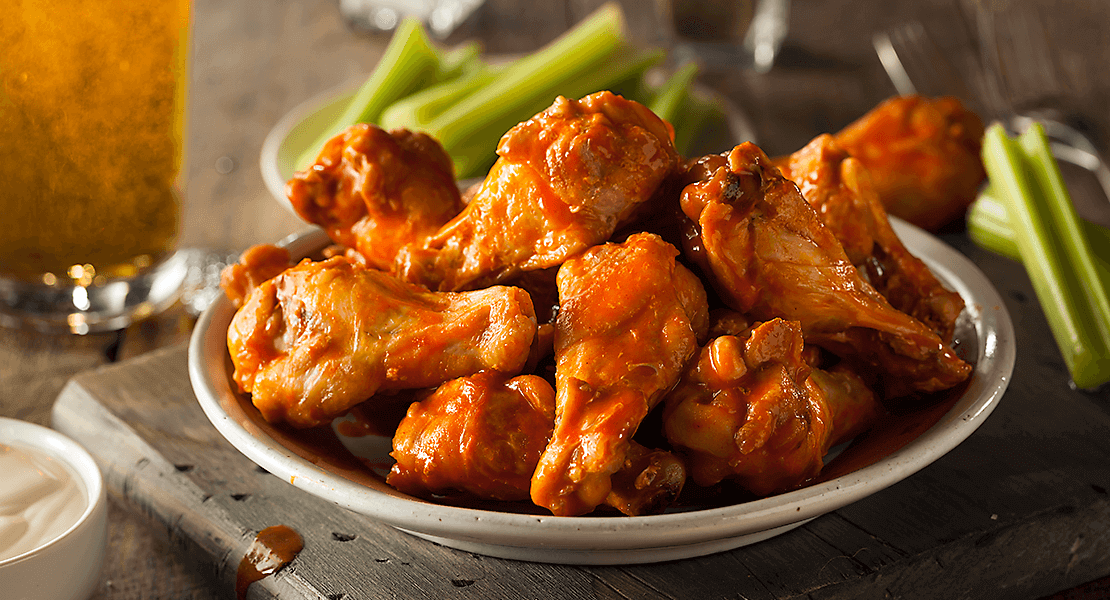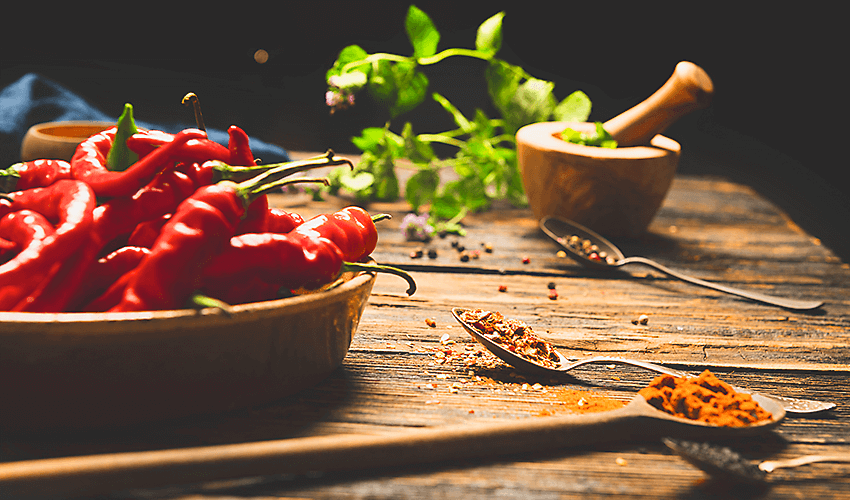
With almost 75 percent of consumers believing that most food tastes better with some level of heat, it only makes sense to explore the many ways you can leverage it to add excitement and complexity to your products.
But just what is heat? And how can you achieve it—naturally?
The heat you feel when eating certain herbs and spices is referred to as pungency. The extracts of these herbs and spices are an efficient and effective way to add heat—with or without added flavor.
Here are just a few of the pungency-laden extracts available to experiment with—and some notes on how they can up the ante on heat and flavor.
Chili Peppers
These are the kings of pungency. Loaded with a class of compounds called capsaicinoids, they are non-volatile and can be deodorized and decolorized for pure heat sensation without added color, odor or flavor. They can also be managed for timing of the sensation. Imagine eating a bag of spicy chips for a moment. You know how the heat slowly builds as you eat them, then once you stop, the heat slowly dissipates? This is the effect of carefully managed capsicum in action.
Ginger
Not as intense as chili pepper extracts, ginger extracts do offer some pungency, along with an attractive warm and sharp aroma. Want the aroma without a trace of the heat? Ginger essential oils can do the trick. Conversely, if you want to add a bit of heat, the flavorless addition of capsicum can help.
Cinnamon
Cinnamon, cassia bark extracts and essential oils offer a moderate pungency with the unmistakable sweet, warm and woody flavors of this beloved spice.
Black and White Pepper
Black pepper is one of the world’s most preferred spicy flavors. While the extracts of both black and white pepper offer less pungency than chilis, that pungency builds more slowly and lingers longer for an entirely different experience.
Mustard and Horseradish
The extracts from these sources are very volatile and their pungency is perceived not on the tongue, but in the nose and eyes. With a very quick onset and decline, they are a good choice when you want a quick—and brief—hit of pungency.
Szechuan
While often called “peppers” Szechuan is actually from the citrus family. They are unique because rather than delivering pungency, they create a tingling sensation in the mouth. Szechuan is often paired with capsicum to create heat. In Ma La dishes, “Ma” is the tingling from Szechuan peppers and “La” is the pungency from the chilis.

By experimenting with the many available extracts, you can discover the right combination of heat temperature, timing and flavor to enhance and elevate food products. No matter how specific your vision may be, we can help you achieve it.
Turn Up the Heat
Deliver on your consumers' desire for hot & spicy flavors & experiences with our unrivaled portfolio of natural pepper solutions.
Explore Culinary Peppers